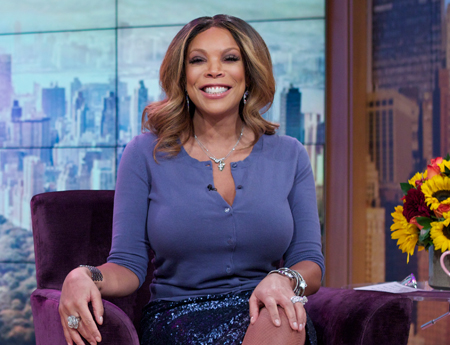Reaching Viewers Beyond Airtime

More than almost any other type of TV program, syndication’s day-and-date shows have a golden opportunity to take advantage of social media by engaging with viewers beyond the time the show airs.
For example, Warner Bros.’ Ellen constantly keeps a fun and lively conversation alive with its viewers via YouTube, Facebook, Twitter, Instagram, Tumblr and now Ellentube, which launched in October and quickly accrued more than 2 million unique visitors. The show also is very active on Twitter, with more than 33 million followers, and uses the platform to offer pop-up contests, prizes and other interactive content.
CBS Television Distribution’s Entertainment Tonight, which is undergoing a shift under new executive producer Brad Bessey, considers social and digital an integral part of its brand. In the past year, unique visits to ETOnline.com have climbed from 2 million to 33 million, according to CTD. During the November sweeps, ET drove its online traffic to new heights with an exclusive interview with supermodel Janice Dickinson in which she claimed comedian Bill Cosby drugged and raped her in 1982.
“We’re all about fulfilling our brand obligations to get information to people as quickly as possible,” says Bessey. “We’re constantly asking ‘how do we position our brand every day?’ It’s our mission to get real entertainment news and content to our audience no matter where they are coming to it.”
Although shows’ digital presences aren’t counted in their Nielsen ratings, they are becoming an increasingly important measure of their success. While Entertainment Tonight’s overall ratings are down 11% year-to-year, season-to-date in households and among women 25-54, according to Nielsen Media Research through Nov. 23, the brand’s digital presence is clearly on the rise.
Debmar-Mercury’s Wendy Williams is up 15% in households and 10% among women 25-54 this season, growth that is at least partly attributable to its digital and social media presence.
“We hit 1 million followers on Facebook at the end of our fourth season, and it was a slow, gradual build,” says Tristan Zimmerman, Wendy Williams senior digital producer. “As the ratings have improved, so has our following. We now have 2.3 million followers on Facebook. Now that we have a much larger, more robust social base, we are targeting them and promoting tune-in messaging.”
The smarter way to stay on top of broadcasting and cable industry. Sign up below
Each day after the show tapes, Zimmerman follows Williams around backstage, chatting with her, and then edits and posts that footage on wendyshow.com, and the show’s YouTube channel.
“We needed to figure out a way to develop the voice of our social media platforms that was consistent with Wendy’s voice,” says Zimmerman. “Platforms like Facebook, Twitter, Instagram and YouTube are powerful tools we use to promote the show and drive viewership.”
Choosing Platforms Wisely
Which platforms a show uses is a strategic choice. While some series choose to use more—Ellen is active on at least six, including Pinterest—others have limited resources.
“Our audience is not engaging with us on Pinterest or Tumblr,” says Zimmerman. “Those platforms are successful for a lot of brands, but I can either focus on three and do really well with those or focus on seven and do less well with all of them. I’ve made the strategic decision to focus my attention on where my audience is.”
Twentieth’s Dish Nation, which features drive-time radio disc jockeys riffing on the news of the day, uses the immediacy of its content to its advantage.
“When a conversation is happening around the zeitgeist, people want to engage in that conversation in a meaningful way,” says Stephen Brown, executive VP, programming and development, Fox Television Stations. “This programming is more relevant to its audience because that’s content you can’t get anywhere else. If you are doing another cooking demo or chat with a celebrity that I could have read five weeks or five months ago, there’s no immediacy or relevancy to that. That’s what our power is and we don’t use it enough.”
For now, a strong digital presence doesn’t necessarily translate to improved revenue, and that remains the Holy Grail. But a more engaged fan base is a step in the right direction.
“A robust social media presence solidifies your base, reminds viewers that the show is on and part of their lives,” says Brown. “People are with their phones more than they are with anything else. If they can catch you on mobile, Facebook or wherever else they are, that becomes part of the fabric of their lives. That’s what we really want to become.”
Contributing editor Paige Albiniak has been covering the business of television for more than 25 years. She is a longtime contributor to Next TV, Broadcasting + Cable and Multichannel News. She concurrently serves as editorial director for The Global Entertainment Marketing Academy of Arts & Sciences (G.E.M.A.). She has written for such publications as TVNewsCheck, The New York Post, Variety, CBS Watch and more. Albiniak was B+C’s Los Angeles bureau chief from September 2002 to 2004, and an associate editor covering Congress and lobbying for the magazine in Washington, D.C., from January 1997 - September 2002.

